We are developing the social individualist meta-context for the future. From the very serious to the extremely frivolous... lets see what is on the mind of the Samizdata people.
Samizdata, derived from Samizdat /n. - a system of clandestine publication of banned literature in the USSR [Russ.,= self-publishing house]
|
Last week, my friend Jonathan Pearce made some observations on the impending takeover of the Manchester United football club by Malcolm Glazer. This led to a lengthy comments thread that I was going to add to, but the comment in question got a little long, so I thought I would turn it into a post. In particular, I wanted to address the key question, which is simply is there any way Mr Glazer can get enough revenue from the club to pay of the large debt that has been accrued, and if so, how.
As I see it there are two sources of value in the club that the present management is not presently allowed to exploit, and to make a success of his bid Glazer needs to gain control of at least one of them. One is that television rights are sold collectively, and as a consequence the share of television money that is going to Manchester United as not comensurate with their popularity and fan base. The other is that Asian and particularly Chinese television markets are not presently competitive and as a consequence Asian television companies are paying far less for the right to show football than the matches are actually worth. I will address these two issues in turn. → Continue reading: Some more thoughts on the Manchester United business
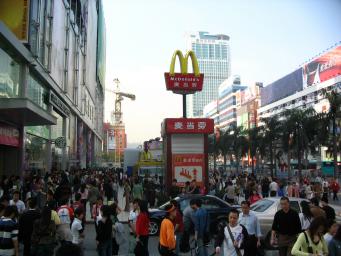

Much has been said and written (some of it by me) on the growth of the Chinese economy and the rise of China as an economic power, and of the growth of an immense manufacturing region on the sides (particularly the east side) of the estuary of the Pearl River between Hong Kong and Guangzhou (Canton). If there is a workshop of the world today the way there was in the north of England in the mid 19th century, then this is it. I have for a while wanted to go and look at it, but I have usually lacked either the time or the money. Ideally I would like to start in Hong Kong, work my way upstream through Shenzhen and Dongguan to Guangzhou, and then back down the other side of the estuary via Zhongshan and Zhuhai to Macau, on the opposite side of the estuary to Hong Kong.
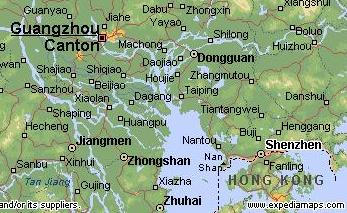
But alas I have still not been able to do this. However, in March I arranged a trip to Australia to visit my family. And I was able to manage a stopover in Hong Kong for three days. Although I was not going to be able to do the trip up and down the estuary that I had hoped to do, I was at least able to spend one day doing something a little interesting, which was to cross the border from Hong Kong to Shenzhen in China proper.
Well, sort of in China proper.Shenzhen is a “Special Economic Zone”. China gave Shenzhen this status in 1980 . (The status was subsequently given to Zhuhai across the border from Macau, the port of Shantou north of Hong Kong, Xiamen in Fujian provice across the water from Taiwan, and the southern island province of Hainan). These areas were given more economic freedom that the rest of China, and more importantly were open to investment from and trade with the rest of the world. This was convenient with the people of Hong Kong, as at that time Hong Kong was undergoing the transition from poor to rich, and labour in Hong Kong was becoming too expensive for the traditional textiles and other low cost manufacturing base to survive in Hong Kong. What happened was that the manufacturing moved across the border to Shenzhen, a boom ensued, and people (to the extent that they were allowed to) flocked to Shenzhen from other regions of China. Since then, much the same thing has happened to Shenzhen as happened to Hong Kong,although Shenzhen remains a less sophisticated place.
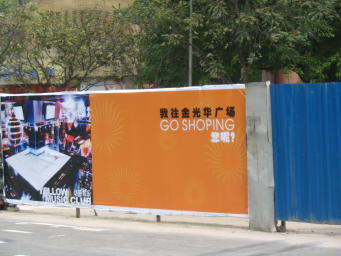
A lot of trading and lower level services, including that with slightly more questionable business practices, has moved to Shenzhen. Labour has become too expensive in Shenzhen for a lot of the low cost manufacturing to take place there, so it has moved further upriver, particularly to Dongguan. (Capacity constraints are much more stretched on the east bank than the west, which is the impetus for a proposal for a huge bridge connecting Lantau island in Hong Kong with Macau and Zhuhai on the other side of the estuary, construction of which is scheduled to commence later this year).
In any event, on Sunday morning I got the train from Kowloon to Lo Wu and (after a few hassles with getting a visa at the border) crossed over into Shenzhen.
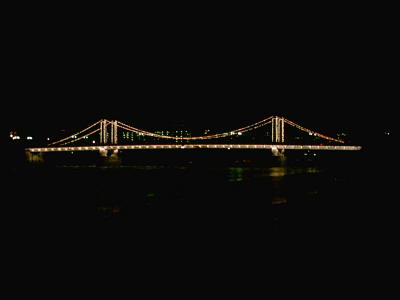
I guess this makes David Carr happy
Initially it felt like sleazy border towns everywhere, but it ultimately turned out to be far more interesting that that. → Continue reading: A belated report on a trip to the wild East.
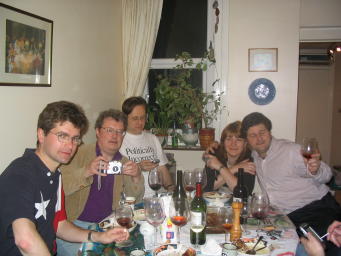
We would like to invite our readership to speculate about who is who?
Update:

All you need to do is give Perry a nice cat and he immediately reveals himself to be a complete softie.

If I thought the Tories genuinely would spend £35bn less on “public services” I might even vote for them. However….
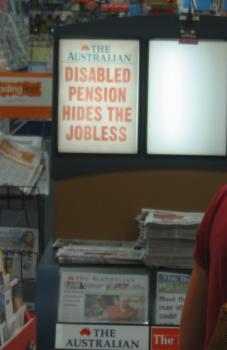
Fancy that.

Personally, I have long wanted a CPU socket and PCI bus built directly into my cranium, but it has not been possible until now.
Already, though, I am getting upgrade envy. It really needs to be Socket 939 and PCI Express.
(seen in a Chinese electronics market on March 20, 2005)
As has been mentioned, I am presently in southern China. At this precise moment, I am using WiFi in a Starbucks in central Shenzhen, just over the border from Hong Kong, recuperating from the heat and humidity outside, and taking an immense dose of caffeine to fight my jetlag.
The Pearl River delta is at this point in history the workshop of the world, particularly in terms of electronics manufacturing (although the goods with the high capital costs tend to still be made in Taiwan, Korea, and elsewhere). Much of the manufacturing tends these days to be done in places like Dongguang (a little further upstream) but Shenzhen is where you go if you want to buy the stuff.
I shall have a lot more to say on this (and lots and lots of photos) later. But for now, here is a picture of some graphics cards with really big fans that I took in a truly immense electronics market a few minutes ago.

This will no doubt make Perry happy.
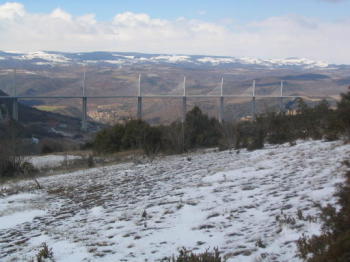
Much has been written about the recently opened Millau Viaduct in the south of France, both here and elsewhere. It takes the form of statistics: 245m from the foot of the valley to the deck, 343m from the foot of the valley to the top of the towers, 2.5km long in total. A cost of €394m to build.
Going out of my way to see the great bridges of the world is something that I do, and after reading all this I was struck by a strong urge to go and see the bridge for myself. So, I flew to Toulouse this last weekend. I rented a car, and headed for Millau. I was in no hurry. I stopped for a pleasant lunch in Albi, and rather than going up the main road, I then wound along the litte roads following the Tarn valley. One thing became obvious quickly. The Tarn valley is a huge gash through the south of France, going for hundreds of kilometres. There was clearly no easy way to build a motorway across it, anywhere. The immensity of the new viaduct was clearly out of necessity.
I had some thoughts of following the Tarn river valley all the way from Albi to Millau, with the idea that I would appreciate the scale of the valley, finally glimpse the viaduct in the distance when I was a few kilometres from it, (or maybe tens of kilometres, depending on the geography), and then approach it and eventually drive under it.
As it happened though, this was not quite what happened. The drive up the valley was spectacular, but it was a difficult drive, due to a narrow road (with some very lengthy narrow tunnels from an earlier era of engineering), and some awkward driving conditions. (It was very cold. Much of the river valley and even some of the road was covered in snow). And I kept stopping due to the fact that the scenery was beautiful and at times remarkable. (The small village of Ambialet, built in a truly extraordinary curve in the river, kept me for some time, as did a few other places).
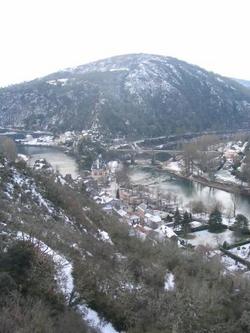
This part of France had an odd feeling of abandonment about it though. There are a lot of small villages along the river, containing beautiful old stone buildings, but these contained very few people and. I get the impression that the valley was a (fairly marginal) agricultural location a generation or two back (potatoes I would guess) but that is now gone. There are a few shops in the villages but these were mostly closed. The permanent population of these places appears to be small, and demographically not especially young. The buildings are generally in good repair, however. I get the impression that this place is highly seasonal. Tourists and owners of holiday homes probably come in summer in huge numbers for canoeing, kayaking, hiking, hang-gliding and various other activities, but not in the winter. Which is a shame, because in winter under the snow the valley was beautiful. But to attract people in winter you need to offer skiing, and this is not skiing country.
But on to the bridge. → Continue reading: Very Cool
I am very disappointed by the options given in this online slashdot poll. Where is the “Built from vast numbers of Nescafe jars” option?
We bit off more than we could chew. They were just Cockney barrow boy spivs. Total thugs. I’ve never seen anyone less amenable to listening to our point of view.
– An unnamed member of a group of Greenpeace activists, who failed to stop trading on the International Petroleum Exchange yesterday, but who did succeed in having the crap beaten out of them by traders.
(Link via Tim Blair)
A few weeks ago, I attended one of the talks that are hosted in London by Brian Micklethwait on the last Friday of every month. The speaker was fellow Samizdatista Alex Singleton, and was essentially on the subject of why globalisation is good (and was incidentally about Alex’s new think tank devoted to this very issue).
In the discussion after the talk, one thing that came up was the benefits of global economies of scale and global competition in manufacturing, retailing and the supply chains in between. A point made was that although it is certainly the case that prices on many goods (clothes and electronics being the examples brought up) have dropped due to retailers being able to easily shop throughout the whole world for products to sell, we do not really yet see customers buying goods directly from foreign retailers. Internet commerce is becoming large, but mostly it is domestic in nature.
However, something happened to me this week that made me think that perhaps more international commerce is happening than we realise, and that a lot of it is happening under the radar.
My present mobile phone is a Motorola v500, which is a lovely phone. (Motorola has always had great engineering. Five years ago they were losing badly to Nokia, who had inferior engineering but better industrial design and better user interfaces, but in recent times they have caught up in both regards). However, it has a small external antenna, which is removable and screws into the phone. As it happened, the thread on the antenna became damaged, and I needed a new antenna.
I went into the Carphone Warehouse store from which I had bought the phone, and they were sympathetic but not very helpful. They were more interested in selling new phones and high mark up accessories than tiny replacement antennas. (They suggested that I visit their repair centre in a different part of London or check the Motorola website). I went to a couple of other mobile phone shops with similar results. Checking the Motorola website led to similar results.
So what to do. Well, I checked on ebay, found that there were plenty of people selling replacement antennas for my phone, put in a bid, and purchased an antenna, online, for £2.77 including postage. Although an antenna probably costs 5 cents to make, I suspect that if I had gone to a “repair centre”, I would have been charged considerably more than £2.70 for a new one, and the other advantage of buying on ebay is that the new one would arrive in the mail in a couple of days.
Just as I was logging out of ebay, I noticed something else, which was “Location of Seller: Singapore”. So it turned out that it was easier and cheaper for me to obtain a new antenna from some guy in Singapore than from a local retailer in London.
Thinking about it some more, I suspect that a lot of this is typical. If you set up a “shop”, then there are still restrictions on where you can obtain goods from and who you can sell to. The producers of branded goods still try very hard to make sure that retailers only sell goods that have been bought from the “authorised distributor” of their brand in a particular country, and that they only sell to people in the same market. In a world where every buyer is also potentially a seller, and where goods can be sold on to people elsewhere in the world, though, this is hard to enforce. And what we do have now are large, trusted companies that act as brokers of goods of all kind. Ebay is the classic example, but as I have discussed before, more and more of Amazon’s business is of this kind too, acting as a broker for third party sellers. I haven’t seen any statistics in the percentage of this kind of trade that is cross border, but I suspect it is growing. (I also buy large numbers of DVDs from the US and Canada through third party sellers via Amazon).
Quite sadly, there is also another obstacle to the growth in this kind of cross border commerce. If you send something through the mail, it is subject to cross border bureaucratic interference in the terms of customs duties and local taxes. (In the case of importing most goods into Britain, the issue is the payment of VAT). If you receive a package and HM Customs and Excise decides to charge you VAT on it, then rather than receiving the goods through the mail, you receive a card explaining the situation. You then have to visit the local post office, and pay the VAT plus an “administration charge” before receiving your goods. The inconvenience and the administration charge can between them make it no longer worth your while to buy from overseas in the first place, which is irritating. Ultimatelly it isn’t so much the tax as the inconvenience that goes with it.
But of course there is a loophole. The VAT is waived if the total value of the goods is less than £18. This regulation was presumably brought in some time in the past to avoid the inconvenience of having to charge tax on every small gift sent throught the mail, but it has now grown into being an examption widely used by customers of internet commerce. You learn not to order multiple DVDs in the same package but to order them one at a time. The additional postage costs are often as much or greater than the tax would be, but this way you avoid the bureaucracy. This doesn’t precisely improve the economic efficiency of the whole process, but the exemption is great enough to allow a large global economy to exist in goods under about £18, whereas there are substantial restrictions on trade in goods of higher value. None the less, some stores have set up specifically in order to take advantage of this tax advantage (Amazon Jersey for instance).
One would hope that someday this exemption would be so widely used that it will lead governments to remove the taxes in resignation, but this is sadly much too hopeful. More likely are attempts to charge taxes on all goods, however small, and much more government intrusion into commerce. And it is the intrusion and bureaucracy that is likely to really be economically destructive, even more so than the taxes themselves.
This post is will ultimately turn into a photo-essay about visiting a Japanese supermarket and having a very fine Japanese lunch in London, but before that it will be long and rambling in my preferred way. People who are just here for the sushi should go directly below the fold and scroll down
One peculiar thing about the novels of Cyberpunk novelist William Gibson is that he has often felt the urge to set large portions of his novels in two cities: London and Tokyo. I have one or two ideas as to why this is so, because, as it happens, these are my favourite two cities as well. Why is hard to describe, though. One aspect of it is that these are cities with tremendous amounts of fine detail or structure. Looking carefully at a street and the buildings on it, and what is sold in shops, in both cities one can see legacies of hundreds or thousands of years of history. (In Tokyo’s case, the fact that much of the city has been covered with concrete has somehow failed to destroy this. In London, the builders of 1950s public housing did do a good job of eradicating it in certain parts of the city, but a great deal none the less still remains) Both cities are collections of villages that have gradually merged into greater agglomerations, a process which was completed by a period of rapid urban railway building. But in both cases all these villages retain very distinct characters of their own and it is very hard to describe precisely where the centre of the city is. Visiting Camden in London or Harajuku in Tokyo on a Sunday afternoon somehow feels similar (although Camden is much grimier). There is a feeling that global youth fashion is somehow emanating from here, and in both places there is an interesting mix of the spontaneous and the commercial, as street markets sit right next door to international brand names, and the relationship is somehow a beneficial one to both parties. Both cities have a media hipness about them – for some reason London and Tokyo are the two cities in the world that produce the most interesting television commercials, although the programming itself on television in both places has rather less to recommend it.
And there is just a buzz that I get when I am in London or Tokyo that I don’t get elsewhere. (I get it to some extent in New York and Hong Kong, but not quite to the same extent. And not quite in the same way). And this buzz goes deep. When I am in a foreign city I like to visit suburbs as well as the centre of the city, and in both London and Tokyo I still find the buzz almost everywhere I go.
I am not going to speculate any more why these two cities are like this. (Well, not much. Both are great ports which are the capitals of Island countries separated from their continents. That must have something to do with it?). In any event, though , I am not the only person to feel this. And I don’t think Gibson is even the only cyberpunk novelist. (Neal Stephenson has just written The Baroque cycle, an immense three volume novel, much of it set in London in the late 17th and early 18th centuries, in which he is trying to figure out the same thing, I think. Stephenson has written less about Tokyo and Japan, although come to think of it there is a fair bit of Japan in both Snow Crash and Cryptonomicon, and even a little in the Baroque Cycle.
But, anyway, in early 2001 I was living in Sydney, Australia. Although Sydney has great weather, wonderful food, beautiful scenery, and many other attractions, I was a little bored. Life was a bit lacking in buzz. I found a link (probably from slashdot) to this article, in which the London Sunday newspaper The Observer had asked Gibson to describe his fascination with Japan. In it he writes as much about London as about Tokyo, both cities being in his eyes being the world capitals for the otaku – the passionate obsessive.
I think he is right. I think the reason I love it is that I can be a passionate obsessive myself.
And (back in 2001) looking carefully at the Observer article, I noticed that the newspaper’s magazine had put out an entire “Japan Issue”, an entire magazine full of articles looking at Japan (and mostly Tokyo) from the perspective of London. (The entire magazine is all still on the web, although there doesn’t seem to be an index. The URLs are fairly easy to guess though).. And reading this magazine in 2001, it was a big thing in making me realise how much I was missing my favourite cities – and as it happened I couldn’t hold out very long and before a year was out I had got on a plane for London. (Tokyo was more culturally daunting without knowing the language, and anyway I have visa issues there. There was nothing whatsoever stopping me from just hopping on a plane for London and looking for a job when I got there). In London I did find the obsessive compulsive Japanese-ness I was looking for, in the places Gibson described such as Portobello markets, and elsewhere. (I have a particular memory of sitting in a London cinema in 2002, watching an animated Japanese homage to a great German expressionist surrounded by an audience of very earnest young Japanese people).
And in particular, I followed the advice of this article from the Observer magazine Japan Issue, and made a visit to the Oriental City shopping centre, a place of amazing Japanese-ness in the unexpected location of Colindale in north London. Where I go from time to time, and where I went again last Sunday.
(Click on for the story and photographs of last Sunday).
→ Continue reading: Searching for Japan in North London
|
Who Are We? The Samizdata people are a bunch of sinister and heavily armed globalist illuminati who seek to infect the entire world with the values of personal liberty and several property. Amongst our many crimes is a sense of humour and the intermittent use of British spelling.
We are also a varied group made up of social individualists, classical liberals, whigs, libertarians, extropians, futurists, ‘Porcupines’, Karl Popper fetishists, recovering neo-conservatives, crazed Ayn Rand worshipers, over-caffeinated Virginia Postrel devotees, witty Frédéric Bastiat wannabes, cypherpunks, minarchists, kritarchists and wild-eyed anarcho-capitalists from Britain, North America, Australia and Europe.
|





